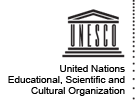This is the Archivematica development wiki. For user and administrative manuals, as well as installation information, please visit archivematica.org.
What is Archivematica?
Archivematica is a free and open-source digital preservation system that is designed to maintain long-term access to digital memory. Archivematica is packaged with the web-based content management system AtoM for access to your digital objects.
The overview section provides a detailed description of Archivematica's functionality and technical architecture. This screencast gives a demo of the core features in the most current release of the system.
Standards-based
Archivematica uses a micro-services design pattern to provide an integrated suite of software tools that allows users to process digital objects from ingest to access in compliance with the ISO-OAIS functional model. Users monitor and control the micro-services via a web-based dashboard. Archivematica uses METS, PREMIS (events, agents, rights and restrictions), Dublin Core, the Library of Congress BagIt specification and other best practice standards and practices to provide trustworthy, authentic, reliable, and interoperable archival packages (AIPs) for storage in your preferred repository.
Open source
All Archivematica code is released under a GNU Affero General Public License (AGPL 3.0) – giving you the freedom to study, modify, improve, and distribute it. We believe that an important part of preservation is transparency, and that memory institutions should be able to demonstrate at every stage what happens when they process cultural heritage materials for preservation. Archivematica code is always freely available, and our documentation is also released under a Creative Commons Share-alike license.
Flexible and customizable
Archivematica provides several decision points that give the user control over choices about format identification tools, printing the original order of the directories ingested, examining contents for private and personal information, extracting contents of packages and forensic images, transcribing content, and more. Users may also preconfigure most of these options for seamless ingest to archival storage and access. Archivematica offers many ingest workflows: metadata and submission documentation import, zipped and unzipped Bag ingest, digital forensic image processing, SIP arrangement, manual normalization, and dataset management.
Compatible with hundreds of formats
In the Format Policy Registry (FPR), Archivematica implements its default format policies based on an analysis of the significant characteristics of file formats. The FPR also offers an editable, flexible framework for format identification, package extraction, transcription and normalization for preservation and access. Your institution can update tools, rules and commands in your local FPR from the Artefactual-managed FPR server. You can also add your own, local policies to your internal FPR. The FPR is integrated with PRONOM.
Advanced search and storage management
You can easily search your backlog and your archival storage from within your Archivematica web-based dashboard. This means you can download stored AIPs as complete packages, individual objects, or every package in an AIC. You can also manage your storage and processing locations using the Archivematica Storage Service, including a two-step deletion process that requires justification and approval to eliminate a stored AIP.
Integration with third-parties
Memory institutions have dedicated voluminous resources over the past couple of decades to implement various software platforms and tools to manage digital objects. For this reason, we believe in leveraging the strength of other tools and integrating with them wherever possible. Highlights include: AtoM, DSpace, CONTENTdm, Islandora, LOCKSS, DuraCloud, Arkivum, OpenStack and Archivists' Toolkit
The software applications integrated into Archivematica are each released under their own open source license. These are checked for license compatibility before they are integrated into the project. A full list of applications with their respective license is available on the external software tools page.
Lead developers and partners
This project is managed by Artefactual Systems in collaboration with the UNESCO Memory of the World's Subcommittee on Technology, the City of Vancouver Archives, Harvard Business School Baker Library, the Museum of Modern Art (MoMA), the University of Alberta Libraries, the University of British Columbia Library, the Rockefeller Archive Center, Simon Fraser University Archives and Records Management, Yale University Library, Zuse-Institute Berlin, Council of Prairie and Pacific University Libraries (COPPUL), Bentley Historical Library, University of Michigan and a number of other collaborators.











